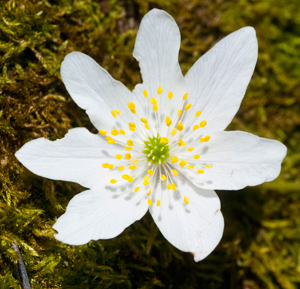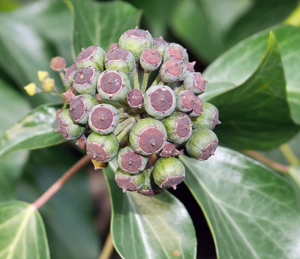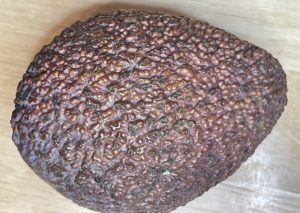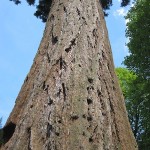woodlands web updates : 29

Flowers of the woodland floor.
Some woodland flowers enjoy the dappled light of the woodland floor beneath the canopy. They grow in relatively shady, cool and damp conditions in the humus-rich soils. Polish scientists at the Nicolaus Copernicus University have been studying four species that often grow together in European woodlands - namely
- Wood anemone
- Yellow anemone
- Lily of the valley
- Common may lily
These are perennial plants that ‘come to life’ in Spring, producing a carpet of flowers across the woodland floor. However, as much as they share a liking for the shady, cool and moist conditions found there, they differ in their sensitivity / tolerance to rainfall / moisture levels in the summer months: which may change their distribution as summers become warmer and longer. The team modelled various warming scenarios which suggested that the ranges of these species may change / contract with hotter and drier summers. The common may lily is one that may be particularly affected and no longer share the same range or woodlands as the others studied. If climate change takes a hold, it may be that ‘assisted migration’ may be needed to help such plants to find suitable ‘climatic refugia’.
more on plant migration ......
With climate change, both plants and animals need to adapt. With increasing warmth, many species may ‘need’ to move towards cooler latitudes. Whilst many animals are mobile, they may be able [over time] to access new suitable areas, plants on the other hand are dependent on the dispersal of their fruits / seeds. Fruit and seed dispersal may involve various animals, including birds.  If the birds are resident or non-migrating species, then it is probable that they will only disperse seeds over relatively short distances.
If the birds are resident or non-migrating species, then it is probable that they will only disperse seeds over relatively short distances.
Migratory birds however travel great distances but often in the wrong direction. Many birds that migrate at the end of the summer, travel south to warmer climes. Work at the University of Exeter has studied a number of woodlands across Europe and bird species that feed on the fruits of 81 plants species (and help disperse their seeds). They found that only about a third of the plants had fruits (seeds) that might be dispersed northwards by birds. To benefit from this northward dispersal, the plants needed to either have
- a very long fruiting period (eg.holly, juniper) or
- a very late fruiting period (eg. Ivy).
Full details of this study here
Food production and food waste.
As Sir David Attenborough has pointed out in a recent episode of Planet Earth III, producing food to feed the world comes at significant environmental cost. Natural ecosystems are often burned (forests) or drained (peatlands) and then turned over to agriculture to produce crops or farm animals. The forests of the Amazon have been significantly affected by burning and logging, with the concomitant loss of biodiversity. But they are not alone.
In Mexico, forests are being lost as the land is being turned over to avocado production. Mexico’s neighbour, the USA has a voracious appetite for this fruit.  The forests are being turned into ‘avocado orchards’. Avocado trees are ‘thirsty’, they need a generous supply of water. They consume much more water than the natural species [eg. oyamel), so that natural aquifers are being depleted. This affects local farmers growing crops such as tomatoes and corn.
The forests are being turned into ‘avocado orchards’. Avocado trees are ‘thirsty’, they need a generous supply of water. They consume much more water than the natural species [eg. oyamel), so that natural aquifers are being depleted. This affects local farmers growing crops such as tomatoes and corn.
One particularly sad aspect of food production is that much of the food is wasted. Some is lost between harvest and reaching the retail sector, and then more is ‘lost’ in the home. Food may not be used, or not used in time so it starts to rot, become rancid etc. A lot of food goes to land fill, where it may generate methane - a potent greenhouse gas.
Sprouting sequoias.
 In recent times, there have been many images of the fires ravaging the forests of the west coast of the States. Many thousands of hectares and millions of trees have been lost, including many of the giant redwoods. However, recent studies have found that some of the burned Sequoias are producing new growth. They are sprouting from roots and trunks, from dormant buds that have lain hidden under the thick bark for decades, this despite the loss of the canopies of the trees. To fuel this growth, the trees are using reserve materials that have been stored for 50+ years.
In recent times, there have been many images of the fires ravaging the forests of the west coast of the States. Many thousands of hectares and millions of trees have been lost, including many of the giant redwoods. However, recent studies have found that some of the burned Sequoias are producing new growth. They are sprouting from roots and trunks, from dormant buds that have lain hidden under the thick bark for decades, this despite the loss of the canopies of the trees. To fuel this growth, the trees are using reserve materials that have been stored for 50+ years.
Comments are closed for this post.
